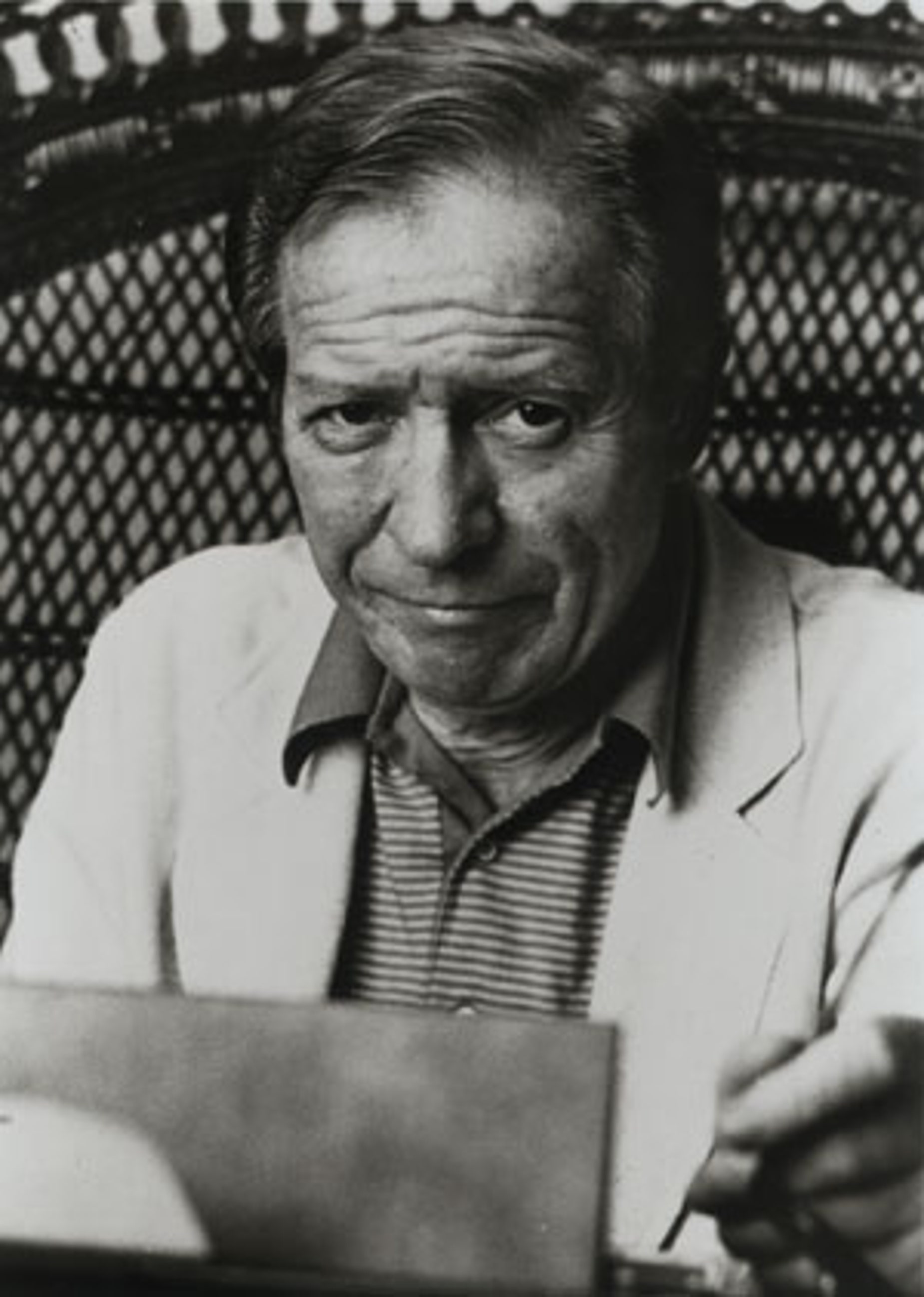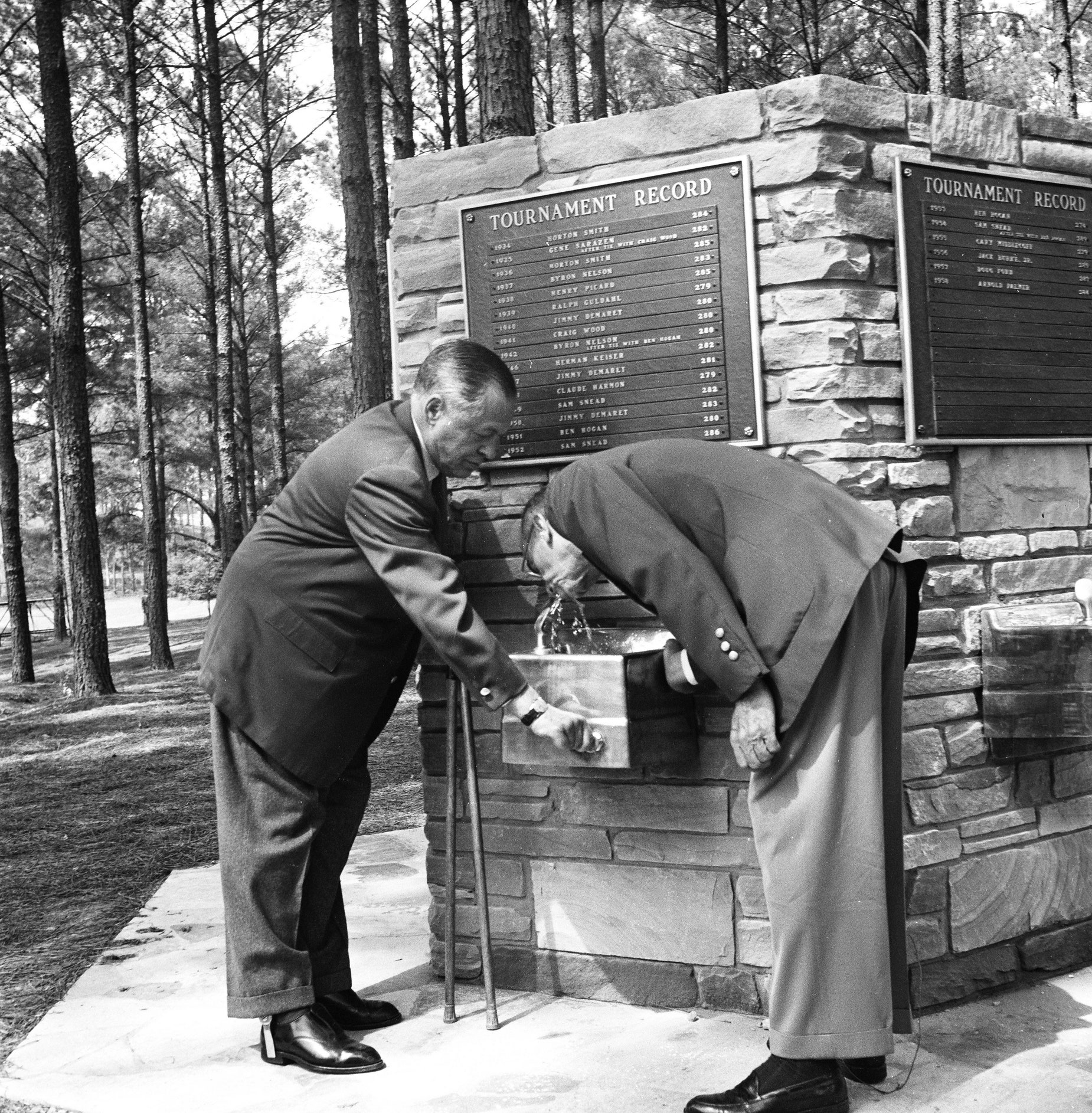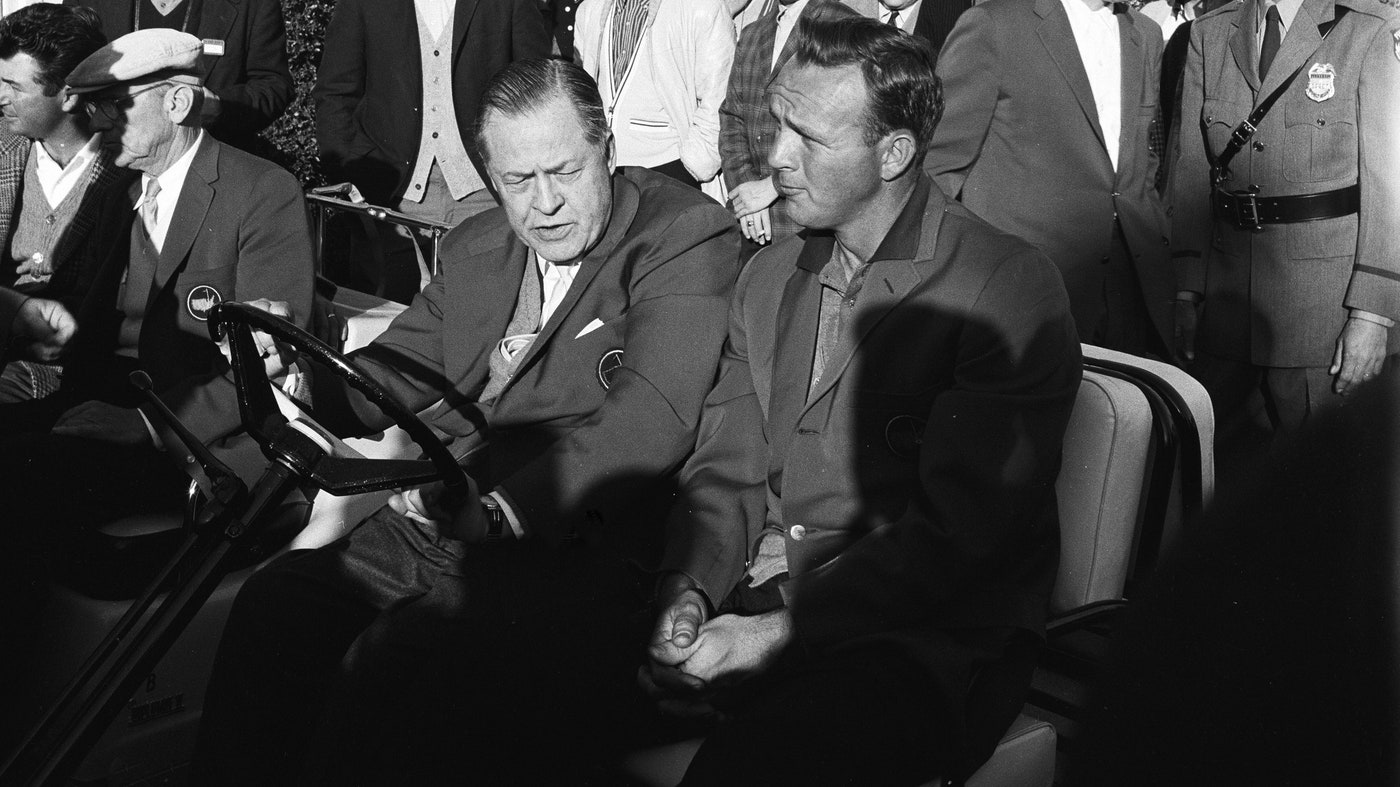The first in a series of classic stories in Golf Digest looks at a declining Bobby Jones at the end of his life and the enduring relationship he had with the author
By Charles Price
This is a new series on the 70th anniversary of Golf Digest commemorating the best literature we’ve ever published. Each entry includes an introduction that celebrates the author or puts the story in context.
The late Charles Price had the raspy look and voice of the Burgess Meredith character in the “Rocky” movies, but the man had style. He could toss a double-breasted blazer over a silk shirt and a pair of linen trousers and, with an ever-present cigarette at his fingertips, give a perfect impression of Fred Astaire on his way to pick up Grace Kelly. He had style on a golf course and at the typewriter. He was a low-handicapper with a sweetly crisp swing, reliably shooting in the low 70s. And he liked to hang out at good places; he was the official Writer-in-Residence at various times at Hilton Head, the Old Course Hotel and, in his final days, Pinehurst. He liked to complain how expensive it was in St. Andrews, even though his lavish room was comped. “Charley, it wouldn’t be so expensive if you didn’t order your cigarettes and scotches by room service,” I told him. He was the first guy I knew who owned an Acura car, when it was introduced in the image of Japanese luxury and mechanics. He said they named the model after him: Legend.
Charley was the founding editor of Golf Magazine in 1959; a frequent companion of Bobby Jones and Gene Sarazen; correspondent for Newsweek and Cosmopolitan; golf historian whose books included The Complete Golfer, Golfer-at-Large and A Golf Story: Bobby Jones, Augusta National and The Masters Tournament; and a monthly columnist for Golf Digest in the early 1980s through his death in 1994. His writing had an ageless quality. He liked to remind me to avoid allusions to modern culture: “How people popularly put things today may already be on the way out. In 1956, the most popular lyric in America was ‘Some enchanted evening.’ Six months later it was ‘You ain’t nothing but a hound dog.’”
The piece I’ve selected for this collection is a wonderful exposition of his philosophy of writing in three rings. As he once told our staff, “Everything must have a beginning, a middle, and an end. In writing they must interconnect, like the three rings of logic. The first ring is your proposition: What the hell is this piece all about? The second ring contains the proof of the proposition. The third ring draws a conclusion from the proof. The trick, though, is to make the third ring interconnect with the first somehow. Thus the reader is reminded of whatever it was you were trying to prove.”
Along with Herbert Warren Wind and Dan Jenkins, Charley might be considered the third player in American golf writing’s Great Triumvirate. His monthly columns were lessons in how to write. This one originally was published in Golf Digest in April 1991. Once you’ve read it, it’s unforgettable. —Jerry Tarde
By 1968 Bobby Jones’ health had slipped from the terrible to the abysmal. His eyes were bloodshot from the spinal disease he had endured for 20 years, his arms atrophied to the size of a schoolgirl’s, his ankles so swollen by body fluids they spilled over the edges of his shoes. This was a man who could once effortlessly drive a golf ball a sixth of a mile.
Still, he had not lost the humor with which he viewed so many things, often at his own expense. Confined to a wheelchair all day, he had to be put into and taken out of bed by a male nurse, who was the size of a linebacker. “He handles me like a flapjack,” Bob said by way of complimenting the man when he introduced us. Then he chuckled. Bob laughed a lot, although never out loud, and he laughed during his last days mostly to put people at their ease, especially strangers. Meeting him then for the first time could be a shock, and Bob knew it. But he insisted on shaking hands with everybody, painful as it had to be, excruciating if his hand were squeezed. But it was part of the price he insisted on paying for having been Bobby Jones, the one and only.
Having covered the Masters for 20 years, I had become his companion during it by a choice that was as much his as mine. Those years became the most fulfilling of the 44 I have been writing about golf. I’ve never written about them, and don’t know why. In looking back, that period in his life seems as towering as the Grand Slam.
For 10 years we had been collaborating on a number of writing chores. Since I then covered the tournament for Newsweek and wrote a column elsewhere that appeared only monthly, I had the time to act as his legman. He had long been unable to watch the Masters even from a golf cart, and his son, Bob III, was on the course most of the day as an official. I became somebody who could bring younger players and foreign writers to him, someone with whom he could pass off a casual observation about the tournament on TV without fear of explaining himself, someone he could share lunch with now that he no longer would eat where people could watch him.
We would sit at a card table next to a window in his cottage that overlooked the 10th tee. A curtain prevented spectators from looking in but allowed Bob to peer out. He had the same thing for lunch almost every day. First there’d be a couple of dry martinis, which he drank with relish but scolded himself for. “I shouldn’t be drinking these,” he said to me one day. “They don’t mix with my medicine.” The martinis would be followed by a hamburger, in part because he liked hamburgers but mainly because he could no longer cut meat and disliked anyone cutting it for him, so gnarled had his fingers become.
Bob smoked more than two packs of cigarettes a day, sometimes in chain fashion, and they were lined on the card table in neat rows for him, each in a holder so he would not accidently burn himself. An elegant lighter, covered in leather, sat ready. All he had to do was push down a lever that any child could. But even that was becoming an effort. So, with as much nonchalance as I could devise, I’d pull out a cigarette of my own, thereby giving me the excuse to light his.
He had been a man who never looked as though he needed help, even when he was dying, and it was part of Bob’s magnificence that disablement evoked admiration more than pity. Those cigarettes were actually a token of his will to live, not the other way around. One day he left me speechless after I lighted one for him. “I’ve got to give these things up,” he said. “They’re bad for me.”

Charley Price
I had long known what was wrong with Bob, and he asked me not to write about it while he was still alive. “People think I’ve got arthritis,” he said. “Let’s let it go at that.”
Actually, he had what is known as syringomyelia—pronounced sir-ring-go-my-ale-ee-ah—an extremely rare disease of the central nervous system. It took eight years to diagnose. Researching it, I found neurosurgeons who had never even seen a case. “And I guess,” one told me, “that I’ve treated 20 cases of amyotrophic lateral sclerosis, or Lou Gehrig’s disease.”
Syringomyelia is a disease you are born with, although it is not hereditary and does not manifest itself until much later in life. Bob had been 46 when his symptoms first appeared. His right leg began to pain him, then the right arm. Eventually, he lost the use of both legs. For a while he got around on elbow crutches, then a “walker” and finally a wheelchair. Then his whole body began to waste away. Even in that condition he went to law offices in Atlanta every day he could, chiefly to keep from vegetating. The disease had no effect on his mind. Indeed, the complex nature of it is such that it doesn’t kill you, as it didn’t Bob. Clinically, he died from an aneurysm, but actually from the exhaustion of just trying to stay alive. “If I’d known it was going to be this easy,” he told Jean Marshall, his secretary, days before he died, “I’d have gone a long time ago.”
Bob and I first collaborated in 1959, when he agreed to rewrite some old instructional articles for Golf Magazine, of which I was the first editor. Three years later he wrote the introduction to a history I had written with his help, which by itself has been widely quoted, especially his line about golfers sometimes being “the dogged victims of inexorable fate.”

Augusta National
“He had been a man who never looked as though he needed help, even when he was dying,” Price wrote of Jones, “and it was part of Bob’s magnificence that disablement evoked admiration more than pity.”
A few years later another book of mine had been dedicated to him, and we had talked about golf at such length and in such detail that I suggested he put together a book from his old newspaper columns and magazine articles. He had written hundreds, not a word of them ghosted. Bob was reluctant, what with his flagging energies, but I convinced him it had to be done. People would be interested in what he had to say about golf a century after he was gone, or long after every other golfer’s thoughts had left the public yawning. His ideas were so eloquent, so down to earth, so free of technicalisms. He agreed when I volunteered to collect them, cut out what was dated, and dovetail the rest into logical order. These were words Bob himself hadn’t read for 30 years or more.
Like a lot of people who are good at it, Bob did not like to write, only to have written. Notwithstanding, he threw himself into the project. My manuscript was retyped by Mrs. Marshall into triple-spaced pages so Bob could mark between the lines any changes he wanted, which he did with a ballpoint pen inserted into a rubber ball he could grip with his crippled fingers.
Sitting with me across from his desk in Atlanta, he’d study every word, pushing each page aside only after he was sure of what he wanted to leave to posterity. I’d note the changes, all the while finding excuses to light his cigarettes. When he was finished, I’d take the changes back to New York, where I lived, while he pondered what was still to be done. The whole process took almost a year. Bob was the most honestly modest golf champion ever. But he was well aware of, and conscientious about, his unique role in the game’s history.
The book became Bobby Jones on Golf (Doubleday & Co., 1966) and I was pleased to learn from Mrs. Marshall that work on it had given Bob a new purpose in life. For the first time in years he was doing something creative and constructive, something only he could do, of which the Grand Slam is just a monument.
At this stage in our friendship, it had become apparent that Bob was passing some sort of torch to me. I was a writer, and I represented the generation immediately after his. He wanted to leave somebody behind who could straighten out the facts of his life if they had to be, as O.B. Keeler did when Bob was at the peak of his career. Bob not only seldom reminisced, he disliked to.
We were joined once in his cottage by two former U.S. Open champions from his era. Bob did all the listening, and I could see he was getting restless. Finally, he made an announcement. “I wonder if you fellows would excuse us,” he said. “Charley and I have something to discuss that can’t wait.” Minutes went by after they left. I had to come out and ask him what it was he wanted to discuss. “Oh, nothing,” he said. “I just can’t stand sitting around talking about ancient history.”
Yet he would with me, all day long, with the Masters Tournament taking place just outside his window. Armed with his confidence in me, I approached him about doing a film on his life, concentrating on the Grand Slam, the drama of which had never been explained to my satisfaction. He was reluctant, as I knew he would be. But I pointed out the inevitable. If he didn’t do the film, somebody else would eventually, disarticulating it with the sort of hyperbole he hated and which he made such an effort to avoid in his own accounts.
So he agreed. Somehow word got out before we had hardly begun, and we were approached by potential producers, one of whom conferred with us in Atlanta. But the project never got much further. Bob became too exhausted to continue. He never came back to the Masters and died in December 1971.
I was abroad at the time. When I got home, there was a package from Bob’s office for me. In it was that lighter with which I had lit so many of his cigarettes, trying to circumvent his pride. There was a note from him, typed by Mrs. Marshall but signed by Bob in his scrawl. “You weren’t fooling me a bit,” it said.









